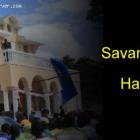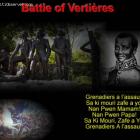Haiti's Fate is Decided in Washington, Not Port-au-Prince
ADVERTISEMENT
The real rate of unemployment is around three quarters of the population despite the government record shows it at 40%. The U.S government has put up $124 million for a power plant and other infrastructure. The Inter-American Development Bank (IDB or IADB), the largest source of development financing for Latin America and the Caribbean has promised to invest $100 million at the Caracol Industrial Park. The IDB is one of the international organizations that oversee the aid programs in the country along with the International Monetary Fund (IMF), World Bank and U.S. Agency for International Development (USAID). They negotiate with the government on the project that needs funding and approve with higher officials in Washington. IDB has arranged to cancel the country's outstanding debt, which amounted to some $487 million. The organization has decided to donate a total of $200 million, every year until 2020 for improving the country's transportation, agriculture, energy, education, water, and development of the private sector. Haiti has so far managed to attract the largest textile manufacture in the world from Korea, "Sae-A Trading Co", to the Caracol Industrial Park. It is anticipated that this park will eventually create 60,000 jobs, although, they will be mostly low paying assembling works at around $5 a day. As per 2011 U.N report, 78% of the population live on below $2 a day while 54% or more than half, live in extreme poverty-- below $1 a day.
U.S is Haiti's chief donor-- recipient of the highest per capita foreign aid. But U.S is now concentrating to build a viable economy.
IDB as the largest donor has contributed $491.7 million between 2010 and 2012 followed by Canada ($374.8 million), the U.S. ($298.1 million) and Spain ($292.5 million), World Bank ($287.4 million) and IMF ($152.4 million).
Read more: Government, Washington, Politics
« Haiti Government reshuffled to satisfied El Rancho Agreement | Main | Fritzto Canton, Jean-Claude Duvalier' lawyer, head of CEP »
Leave a Reply
Name (required) E-mail (required, will not be published)
» »
Our objective is to share with you news and information about Haiti and the people of Haiti. Traditions, habits and the way we were or grew are alive in this site. We highly recommend that you Subscribe to our Newsletter and also share with us some of the things that are memorable and made us unique people.


 La Chapelle, Haiti
La Chapelle, Haiti  The Town of Savanette, Haiti
The Town of Savanette, Haiti  Battle of Vertieres
Battle of Vertieres  Black Friday Shopping Season
Black Friday Shopping Season  Haiti tech Summit
Haiti tech Summit